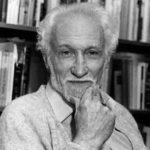Rivers That Were
2 CDs
The Columbia River, flowing through the Pacific Northwest, is the fourth largest river in North America. The Colorado River, the major river in the desert Southwest, is a tiny stream compared to the Columbia, but it is probably the most litigated river in the world. Both these rivers once flowed with a force that overwhelmed the people who tried to navigate their rapids or control their currents and flood flows. That was until the Hoover, Bonneville and Grand Coulee Dams were built in the 1930s, finally taming these wild rivers and conscripting them into industrial service.Alternative Radio presents “Rivers That Were”, a two-part documentary by Oregon-based award-winning producer Barbara Bernstein. These two hours explore the long-term consequences of over a century of redesigning nature to suit commercial and industrial needs. The programs contrast these historic mindsets with new approaches that try to design with nature. The programs juxtapose the voices and viewpoints of Native Americans, barge operators, water engineers, environmentalists, policy makers and others who live and work in the watersheds of these two mythic Western rivers.
Part One: “Working Water” compares two environmental crises. On the Colorado River Basin, it’s the ongoing effort to restore the Salton Sea. On the Columbia, it’s the confounding crisis of how to clean up one of the most toxic sites in the world, the Hanford Nuclear Reservation.
Part Two: “Beaver Taught Salmon How To Jump” recreates the once natural and free-flowing tributaries and mainstem of the Columbia River, the Great River of the West and compares what was with a transformed landscape of culverted urban creeks, inundated waterfalls and rapids and industrialized waterways. See www.mediaprojectonline.org
Speaker

Barbara Bernstein
Barbara Bernstein is a nationally acclaimed radio producer. Recipient of many awards, she is one of this country’s finest independent producers. See www.mediaprojectonline.org






L.A. Cotter –
This is a fascinating series of interviews with knowledgeable and memorable interlocutors, whose reflections include reference to wider economic and social changes, as well as cultural/mythic reference points. It includes well-known Indigenous contemporary artists and writers and other movers and shapers from tribal communities. A fantastic piece of oral history.